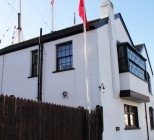“We are now inside Brunel’s mind” says Rhian Tritton, Director of Interpretation, Collections and Education and Deputy CEO of Brunel’s SS Great Britain, as I am taken through the ear canal of an eight-metre head of Isambard Kingdom Brunel. The giant head, which is a depiction of the famous engineer, with his stovepipe hat and lit cigar, is at the centre of the new £7.2m visitor attraction. Inside the ‘mind’ of Brunel, visitors will be transported from the busy exhibitions to a soundproofed and concealed mini auditorium where they will sit and watch a six-and-a-half minute film that will show incidents in Brunel’s life from his minds-eye, filmed at various locations using head-mounted cameras. Up above is a dome that continually brings visuals of moments and objects in his life giving the impression of his mind ticking over.
Created by Centre Screen, Brunel’s mind puts the wow factor into a visitor experience that already packs a punch in its detail. The concept of going inside the mind of the Brunel was born in 2012 as plans were being drawn up for the museum and Tritton was watching the film Being John Malkovich.
“The exhibition sprang fully formed right from the word go,” she says. “We knew there would be a series of areas dealing with certain aspects of his personality but it was while watching Being John Malkovich and looking at Brunel’s sketchbooks that made me ask the question ‘what would it have been like inside his head?’ That’s where the idea came for the head. So, it was a combination of real life items and popular culture.”
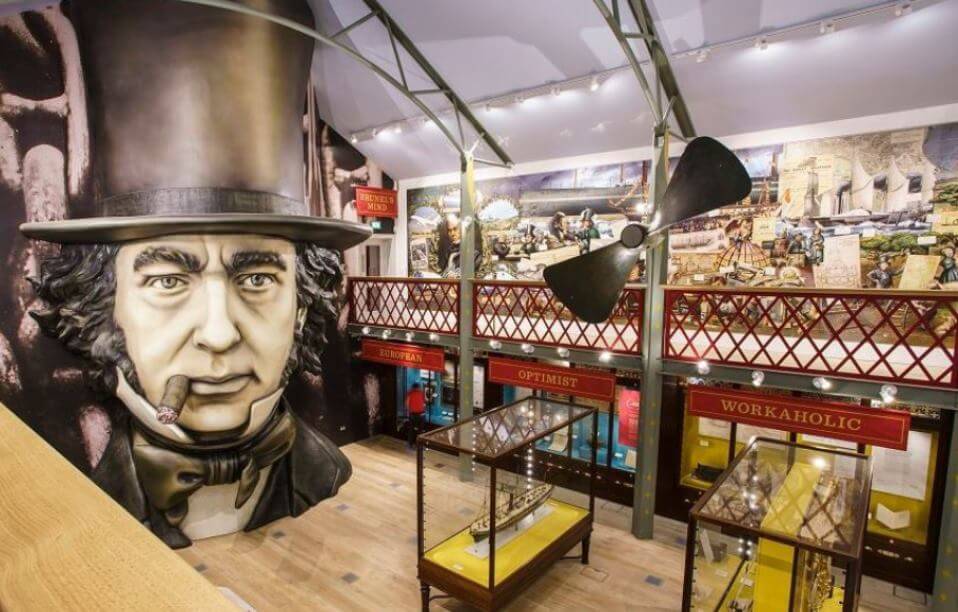
The museum aims to do three things: teach visitors about what made Brunel, his upbringing and family; what it was he made – his major projects; and also what that means for the visitor – his legacy. Everything that visitors will see, the displays, all of the interpretation and the interactives are designed to help the museum deliver on those three themes.
At the start of the experience visitors will be taken along the SS Great Britain ship and past the restored Grade II* Listed Dock Office, a new steel-framed harbourside building reflecting the façade of original buildings from 1840 when the SS Great Britain was being built on the dockyard opposite. The new harbourside building will act as the main exhibition hall but before visitors enter it and see the giant head, they will be guided into a small entrance area where they will see in front of them a reproduction of the chains made famous from an 1857 photo of Brunel standing next to his third and final ship the SS Great Eastern. Here they can don a stovepipe hat and take a selfie before moving into the museum’s first exhibition space, Brunel’s Shakespeare Room.
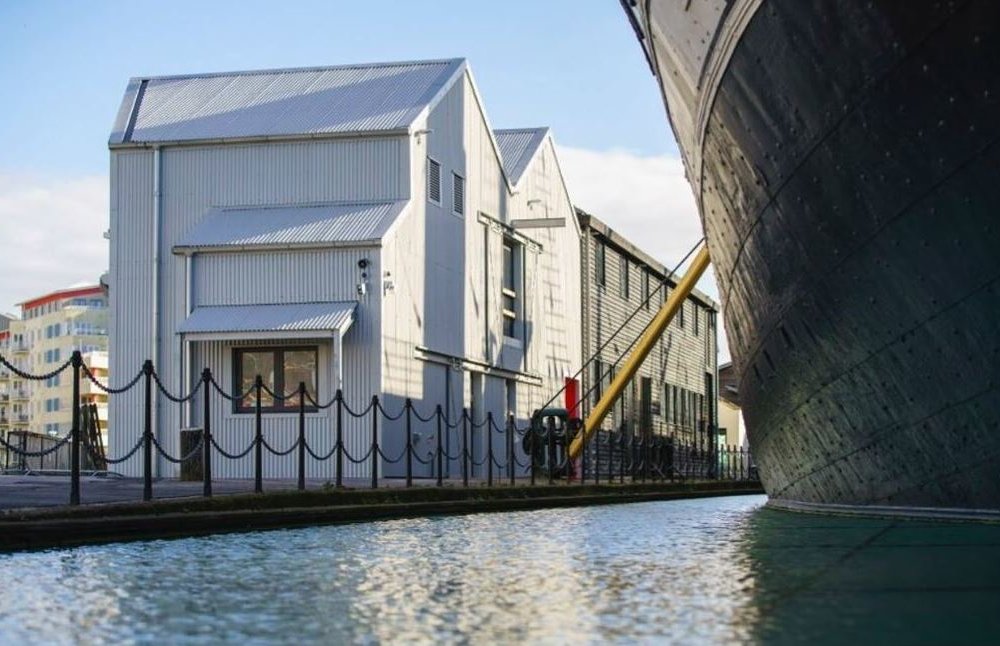
“What we wanted to do first of all is to get visitors to meet Brunel, if you like, to get to know him. We know from our research before we started the project that visitors were fascinated by his character and what he would have been like.” The Shakespeare Room is a recreation of a room at Brunel’s house in 18 Duke Street, London. It would have been situated on the ground floor of that property and above that would have been his office, which is recreated further along in the museum.
This will be an opportunity for visitors to immerse themselves in Brunel’s home and discover his love for William Shakespeare with three paintings being displayed showing scenes from his plays that Brunel had commissioned. The Shakespeare Room was also a space where Brunel would dine guests and prospective benefactors for his projects. Through Brunel’s own sketches and notes curators have been able to envisage how the room would have been laid out. On display will be a silver gilt tableware set presented to Brunel by the directors of the Great Western Railway Company after he built the London-Bristol railway.
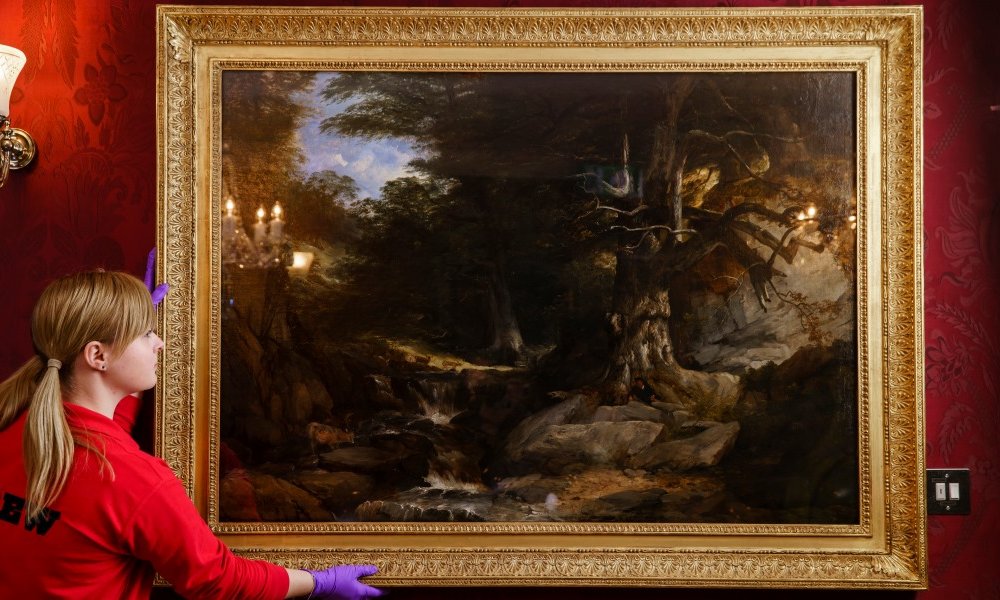
“What we are offering visitors in this space is the feeling they are in the same room as Brunel and there will be an interactive Guest Who, where visitors pick the perfect dinner party companions for Brunel. Because it’s not just about having friends around for dinner, it’s about picking people who can help support your projects. We have used his letter books to aid this and Brunel had a wide and vibrant social network, he was really well-connected.”
This room is also an opportunity for visitors to get to know Brunel’s family, in particular his father Sir Marc Brunel, a distinguished engineer himself, who had a close and supportive relationship with his son. It was Sir Marc who encouraged his son to draw, which would play a crucial roles in later life. In one of the Victorian sideboards – made by Workhaus Projects, who were responsible for the internal fit-out – which doubles up as a museum case, there is a pencil sketch of a horse by a six-year-old Brunel. Throughout the museum there are examples of his drawing that would enable him to design every aspect of his projects. In the Shakespeare Room there will also be talking portraits of Brunel’s sister Sophia and Sir Marc conversing directly to each other with actors playing the roles.
“This room will therefore show people that he was a far more complex character than they thought he was. What we have discovered over the past six years is that the there is so much more to the Brunel we thought we knew, he’s more interesting, human and flawed. And that’s the Brunel we want people to meet here.”
Great Exhibition of 1851
From the Shakespeare Room visitors will then move into the huge main hall, which has been designed to represent the Great Exhibition of 1851 – where Brunel walked in the opening procession with Queen Victoria – which will give visitors a sense of the ingenuity and energy of the time. And this is where they will be introduced to the huge head of Brunel at the far end of the hall. The cabinets in the hall have been designed to reflect the style at the time and the brass details have come from Brunel’s sketchbooks.
“All of the draws have items in them such as a Bradshaw’s of 1846. It was at this time the GWR created timetables because there used to be differences in time between Bristol and London. But once you had a railway and a timetable you couldn’t have that and time was standardised across the country to Greenwich Meantime.”
Much of the main hall is dedicated to Brunel’s achievements with the Great Western Railway and includes a table with a moving illustration of his drawings that follows the railways path from London to Bristol, with obstacles and all, and visitors will be able to board a shaking 1830s broad-gauge railway carriage and experience Brunel’s experiments drawing perfect circles, which allowed him to ascertain how smooth the ride was. Today visitors will attempt this with iPads.
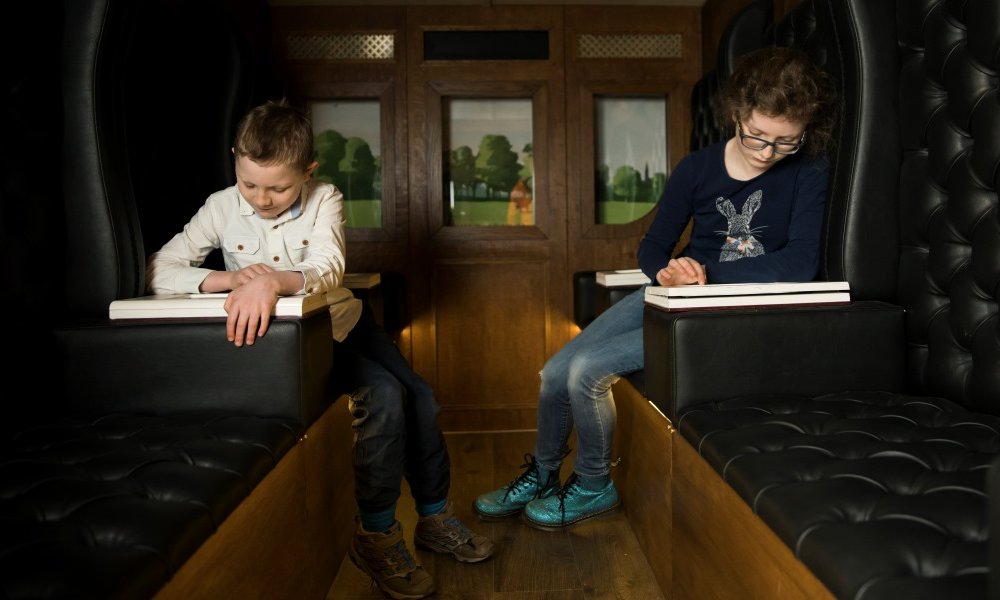
Throughout the museum there are a variety of mediums to tell Brunel’s story including infographics, text panels and objects including one of Brunel’s original cigar cases that could hold 48 cigars, the amount he would smoke each day. On the mezzanine there is a large illustrated timeline by artist David Lawrence that gives a humorous and often first person account of his life and which stretches along the wall that leads into Brunel’s mind. “And inside the mind it is all about an emotional connection and seeing a dramatic recreation they have already learnt about in the museum along with sounds and smells.”
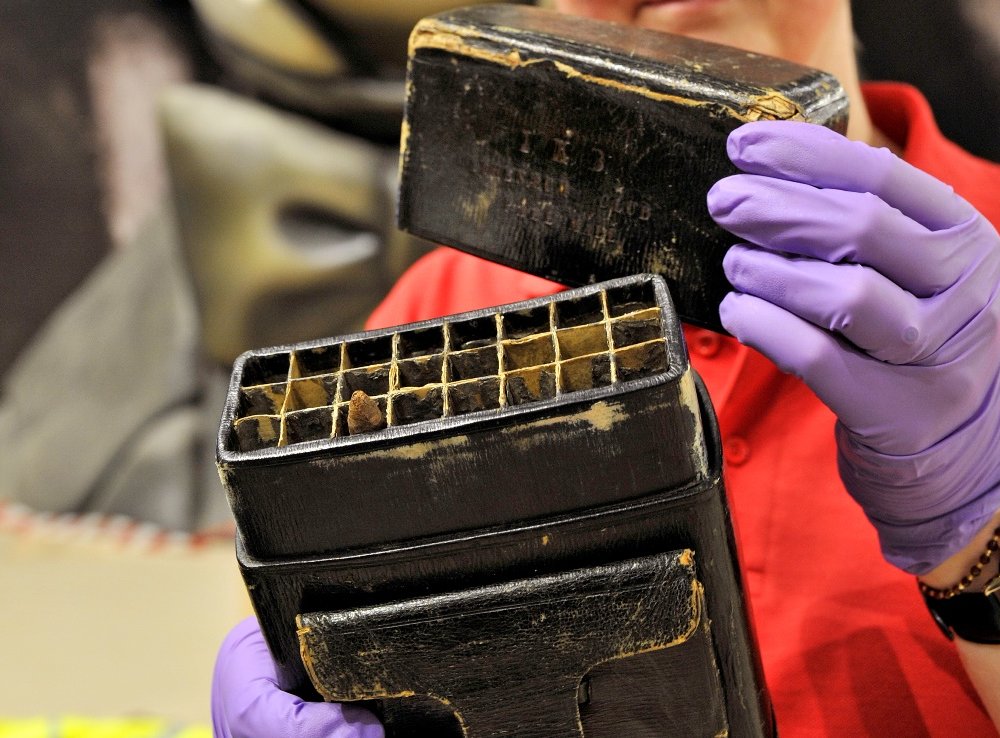
At the end of a six-and-a-half minutes film inside the mind the far door will open and visitors will come out from Brunel’s mental world and back into his physical world. The next stop on the journey will take visitors into Brunel’s fully reconstructed office at 18 Duke Street. From a watercolour created by his niece Lady MacCarthy, Tiverton-based furniture designers, Warren Hughes, have created Brunel’s desk and chair, map rails and Sir Marc Brunel’s block making machine and other items that transport the visitor back in time.
In this space there will be a costumed interpreter who will prompt visitors to touch reproduced letters with Brunel’s personal wax seal and sit at his desk and open his desk drawers.
The office scene is set on 28 September 1840 when Brunel was about to travel to Bristol for a crucial meeting in the Dock Office where he would try to convince the directors of the Great Western Steamship Company that they didn’t want the half built SS Great Britain that was visible outside the window, already over budget with great paddle wheels. What they wanted was to let him change her completely and put new engines in and put the screw propeller on the stern.

As visitors walk out of the recreated London office they enter the restored original Dock Office and it is here they experience the working conditions in Bristol where the plans for Brunel’s ships would have been drawn up. Original paint samples were taken to make the experience as authentic as possible.
“This is the moment and place where Brunel convinced the board to change the plans and in doing so changed the future not just of SS Great Britain but the whole of maritime history because if it hadn’t been for SS Great Britain there would be no Queen Mary, so it’s a really a pivotal moment in all sorts of ways.”
The penultimate experience is a reconstructed seven-minute film of the meeting between Brunel and the directors, which shows his grasp of technical facts and his ability to express them in a straightforward way to people. It also shows the sheer force of his personality. Visitors will also be able to cast their vote in a replica of the voting box. The Being Brunel journey will end with the Let Me Try gallery named after an extract in Brunel’s diary where he says about the Great Western Railway ‘one day we will be able to travel smoothlessly and soundlessly at 40mph while working and taking our coffee. Let me try.’
It’s a big rallying cry to end a breath-taking tour of Brunel’s innovative and entrepreneurial mind. As visitors walk through the gallery there will be an electronic panel showing how they voted and animations showing what the world would have been like if paddles had proliferated, especially for the doubters. Because what the SS Great Britain Trust have been able to do by creating Being Brunel is offer a visitor experience that is as fast-paced and as interesting, one can only imagine, as Brunel’s life. And with the physical SS Great Britain on the same site, the trust can offer a 360 degree experience of a truly great man and in doing so change their business model to a day-long visitor attraction, from a half-day one, and improve their fortunes going forward.






